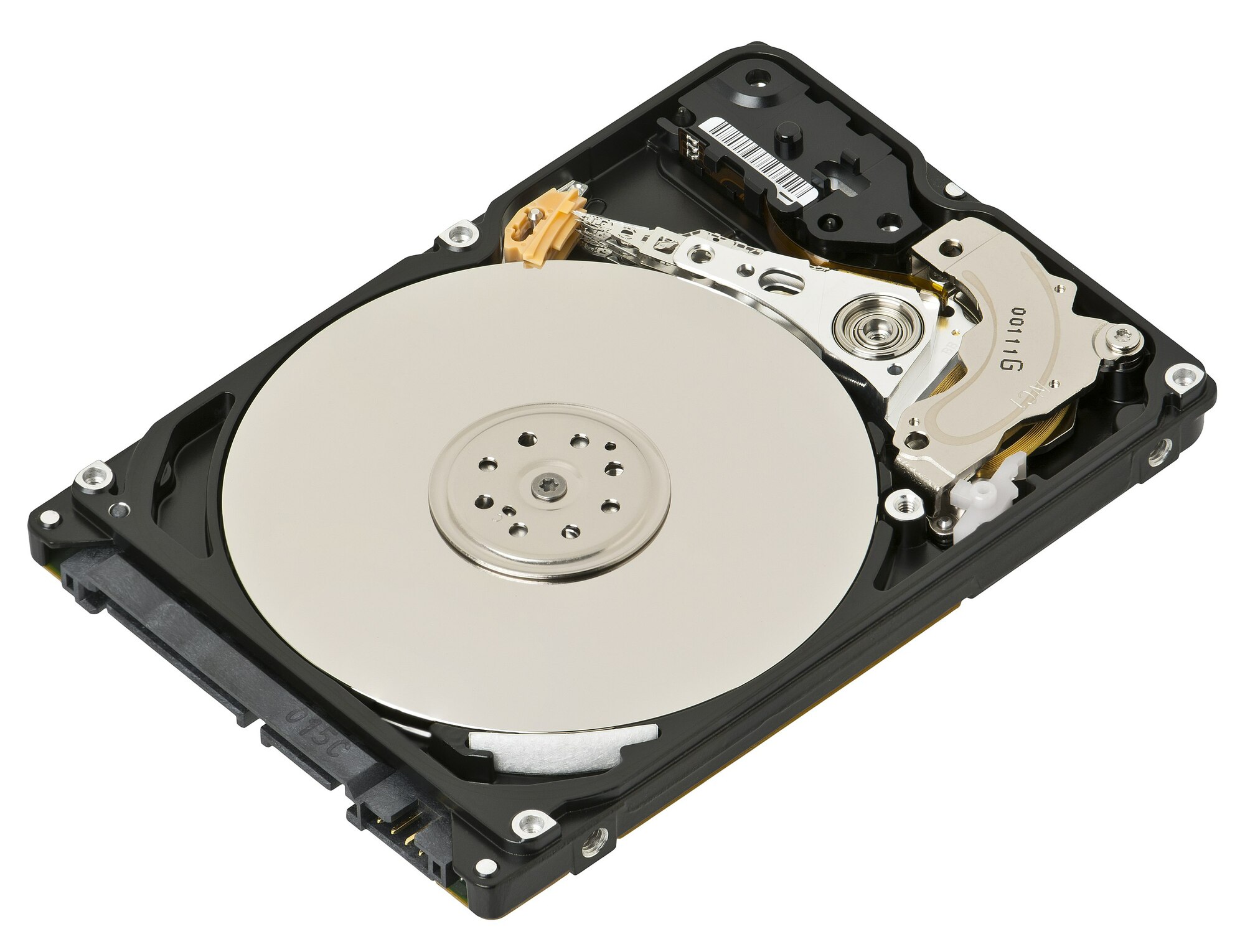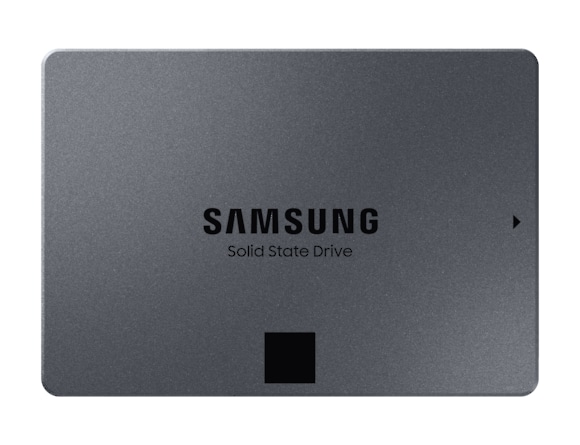If you’re relatively new to computers or you haven’t investigated buying a new one in a few years, NVMe storage might be an unfamiliar topic for you. It’s a technology that is moving rapidly, and almost every single one of our PCs comes equipped with it.
But what is it? What does NVME storage do? Here we’ll break down all of those questions, what it means for your PC and whether you need it or not.
To allow you to fully understand the benefits of NVMe storage, we need to step back a little and grasp the other form of PC storage devices available.

HDD Storage
Hard Disk Drive storage is your “classic” form of computer storage. HDD storage, often simply called “Hard Drives” store data by embedding it into a disk (for the purposes of this article, you can imagine this like a CD or DVD). The small disk is spinning inside your PC and the data is being read by a small moving arm, which picks up that data, and sends it to your PC.
However, a physical spinning disk and moving arm have their limitations. The disk can only spin at a certain speed, the arm can only move at a limited rate. These limitations result in a limited data read and data write speed. Hard drives can only read (and therefore send) data at a limited speed and they can only write (and therefore save) data as quick as they can.
Slow Data Speeds
Typically, hard drives can read data at around 80MB/s and write data at 160MB/s. To simplify a little, a PC using an HDD will take 1 second to read an 80MB file and half a second to save an 80MB file.
There are nuances in how data is stored which will dramatically alter how fast a storage device can read/write data, but for now, we’ll keep it simple.
Granted, 1 second doesn’t sound very long to load a file. Right?
It’s true. 80MB/s was plenty when file sizes were much smaller. But in the age of 4K Video, 100Megapixel photographs and increasing program sizes, 80MB/s begins to slow down your entire PC.
Backing up your modest 300GBs of images and videos to an external disk would take over an hour. Downloading a program or a Windows update could saturate your computer’s bandwidth and make it struggle to perform even the simplest of tasks. Your PC could take minutes to turn on before you’re able to log-in.
In 2020, there are plenty of occasions where using an HDD as your primary storage drive will cause you headaches and bottleneck the performance of your PC.
That’s not to say that HDD is obsolete and shouldn’t be used any more. More on this later.

SSD Storage
SSD Storage, or Solid State Drives, are a well-known technology and have been improving in performance since their release. Solid State Drives perform the same tasks and function in a PC as your everyday Hard Drive, but there are no moving parts inside.
The data is stored in “chips” inside the SSD making the data much faster to access than on a physical moving disk. SSDs can read and write data so fast, that they’re limited by the speed of their connection to the PC.
Getting Faster
SSD Storage can achieve upward of 500MB per second read/write speeds. Meaning your 300GB of files now only takes around 10minutes to back-up. Your system doesn’t become saturated by simple Windows Updates and your PC Boots in mere seconds.
For years, SSDs were the “go-to” for storing your operating system on (known as the OS-Drive, or Boot Drive) due to how quickly they allow windows to load and boot. Typically, a freshly installed instance of Windows 10 can boot to the log-in screen in around 10 seconds. Worlds apart from the minutes of waiting you can experience on an HDD.
Laptops, in addition, benefit from solid-state drives. Since laptops are moved from place to place, often whilst turned on, their internal hard drives will fail prematurely. The spinning disk inside becomes damaged, even by small movements.
Solid State Hard drives have no moving parts, meaning laptops can be moved freely around the house, or on public transport, without fear of doing damage.

NVMe M.2 Storage
Remember how we mentioned earlier that SSDs are so fast that their limiting factor is how they’re connected to the PC? Well NVMe M.2 SSDs are connected in a new way. A way that makes them much faster.
NVMe Storage is the most recent breakthrough in the storage options we’ve listed here. NVMe, Non-Volatile Memory Express, refers to the “controller” of the storage. This new controller allows data to be transferred much faster than ever before. The M.2 part of the name refers to how they connect to the PC. The most common NVMe form-factor in our computers is M.2 storage.
An NVME M.2 SSD is an SSD, that connects via an M.2 Socket via an NVMe controller.
These are physically tiny (storage options are quite large) sticks of memory, plugged directly into the motherboard, allowing for blisteringly fast transfer rates. NVMe M.2 Storage can top-out at 5,000MB/s.
If you were backing up your 300GBs between two NVMe devices, it would take less than 60 seconds. Your system will boot in seconds.
By utilising an NVMe M.2 SSD, you’re saving space inside your system, which results in greater airflow and a smaller PC.
Which Storage option is right for you?
In 2020, at a base level, we install the majority of our machines with NVMe M.2 Solid State Drives for storing and installing Windows 10. This gives the absolute best performance for everyday uses, allows the machine to turn on almost instantly and your experience is improved.
The majority of our machines come with a 500GB NVMe SSD, although towards the budget end, they may use 250GB. 250GB is the minimum we recommend for an Operating System drive. The majority of that drive will be taken up when we install windows, leaving a small portion remaining for your additional programs and personal files. This is why we generally prefer a 500GB M.2 NVMe SSD.
If speed is of the essence for work, play or hobbies, we do install NVMe M.2 SSDs up to 2TB in our machines. That’s more than most people require and, whilst a little pricey will give you a lot of freedom and flexibility to grow into your system.
However, if you’re a gamer, looking to play the latest games at high settings, try to find room in your budget for the largest NVMe SSD you can find. Games are getting bigger and bigger. And a 500GB is often only enough to store one or rwo games on today.
Supplementing with a Hard Drive
Commonly we’ll also install an HDD (or several) into a customer’s machine. The relatively low cost of HDDs makes them an attractive storage option and allows you to store Terabytes of data cheaply. This is specifically useful when storing data where speed isn’t a necessity. Long term storage and back-ups, game recording, general low-usage programs or games where load speeds just don’t matter.
This is typically the best bang-for-buck option, as you don’t always need 5000MB/s for all of your computing needs.
More Resources:
If after reading this, you realise you want to take a step into the world of NVMe SSDs. Give our chillblast specialists a call and they can talk you through a variety of options.
Check out this blog for a more in-depth look at some of the NVMe SSDs on offer by Seagate!
Give this blog a read for a more in-depth look at the NVMe SSDs on offer by Corsair!






